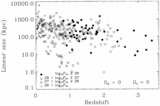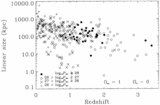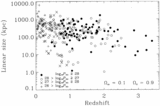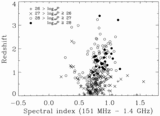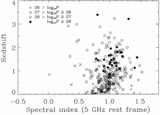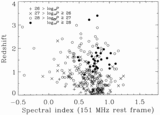Image Details
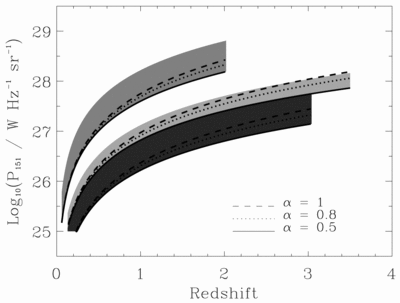
Caption: Fig. 1.
Schematic illustration of the coverage of the luminosity (at 151 MHz rest frame) vs. redshift (P‐z) plane from a single sample selecting all sources brighter than 12 Jy in a certain sky area (medium gray), a single sample of sources with flux densities between 2 and 4 Jy (lightgray), and a single sample that has selected sources brighter than 0.5 Jy in a much smaller area of sky (darkgray). Each colored region contains a similar number of sources. The solid black lines in each case correspond to the minimum luminosity that a source at that redshift may have and yet still be above the minimum flux limit of the sample assuming source spectral indices are 0.5; other line styles indicate the influence of other spectral indices on the shape of the flux limit on the P‐z plane. The upper edge of the medium‐gray region arises because of a maximum observed luminosity in radio sources: The upper edge of the dark gray region arises because, in its small sky area, the probability of finding more luminous sources is low.
Copyright and Terms & Conditions
© 1999. The American Astronomical Society. All rights reserved. Printed in U.S.A.



